Baroness Marie-Thérèse Ullens de Schooten (1905–89)
In Varamin: probably 1950s, ca. 1950–72
Repository: The Baroness Marie-Thérèse Ullens de Schooten collection at Harvard University, Cambridge, MA
Curator’s preface: In the field of Iranian art history, Baroness Marie-Thérèse Ullens de Schooten (1905–89) is perhaps best known through her nearly 2,000 photographs digitized on Archnet, a leading online resource focused on the built environment of Muslim societies. The text below draws from Archnet’s biography of the Baroness while ultimately exploring her physical archive preserved at Harvard University. As we shall see, the Baroness’ collection relates directly to that of the Godards in the Louvre and includes important Varamin materials.
***
Baroness Marie-Thérèse Ullens de Schooten was the youngest daughter of Belgian and Austrian parents (fig. 1). In 1926, she married Jean Ullens de Schooten, a Belgian diplomat, and his work took them from Egypt to California and then Oslo, India, and Pakistan. In 1948, they traveled to Iran, where they met André and Yedda Godard. He was the director of the Archaeological Services of Iran, an appointment held since 1928.
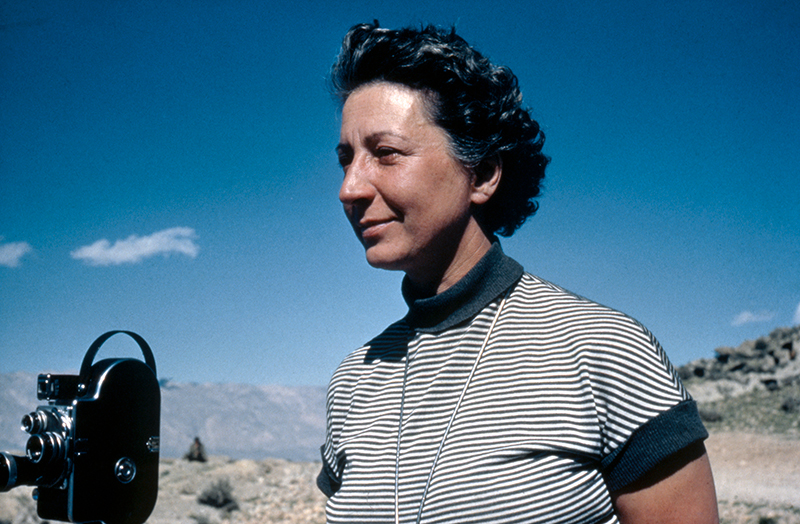
After her husband’s sudden death in 1950, the Godards invited the Baroness to Iran to produce films and photographs to illustrate their lectures on sites like Persepolis and those in Tehran and Esfahan. This led to annual trips in the 1950s and 1960s during which she worked with the Godards and also produced her own documentary work on landscapes, architectural sites, and nomadic tribes, including the Qashqaʾi (Kashkai) (fig. 2). Alongside photography, she created important films and sound recordings, all of which are available online (see below). She also published many books (for example) and articles, including some in her capacity as a Fellow of the Royal Geographical Society in London, an appointment that followed her film on the Qashqaʾi earning first prize at the 1954 Edinburgh Film Festival. She last traveled to Iran in 1977.
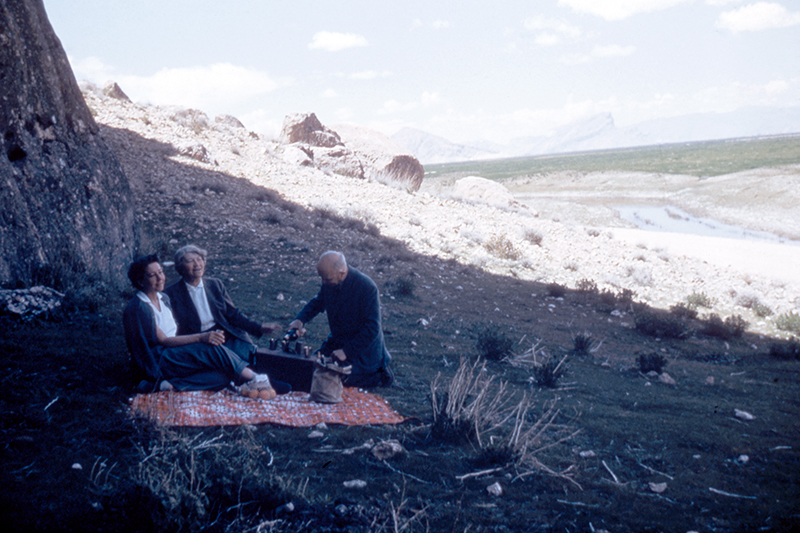
Harvard’s digitized collection includes the Baroness’ thirty photographs of Varamin. In addition to photographing the congregational mosque, tomb tower of ʿAlaoddin, Emamzadeh Yahya, and Emamzadeh Jaʿfar (in nearby Pishva), she also took important images of Qalʿeh Iraj (map), a massive rectangular fortress northeast of Varamin, set in a beautiful landscape (fig. 3).
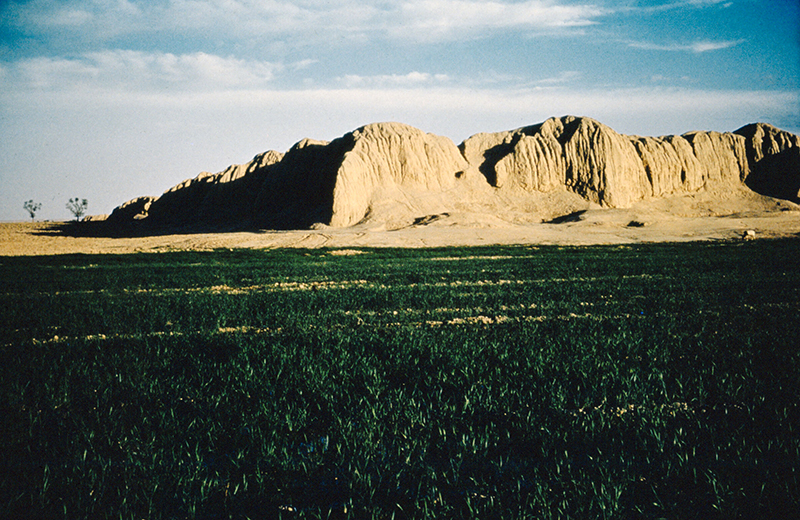
The Baroness died in 1989. In 1991, her son, Count Charles Ullens de Schooten, gifted her archive to the Harvard Semitic Museum at Harvard University (now the Museum of the Ancient Near East). The collection contains mainly slides and photographs as well as field recordings, notebooks, lecture notes, scripts, and other papers from the Baroness’ work and travels in Egypt and the Sudan (1927–30, 1978), Iraq (1948), the Persian Gulf (1964), and Iran (1948–1970s) (fig. 4). Most of her photographs were taken in Iran in the 1950s.
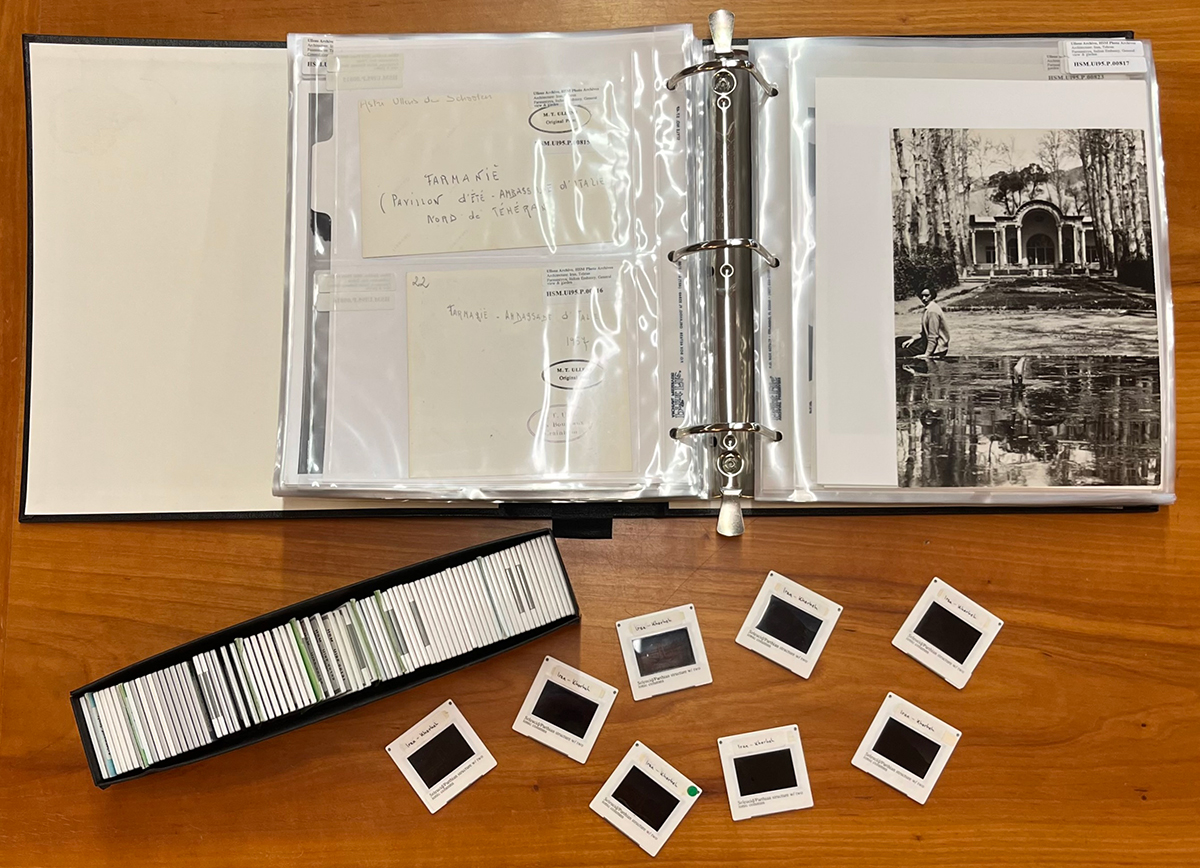
Of particular note are André Godard’s notebooks, which he entrusted to the Baroness. These include field notebooks entitled l’Inventaire des monuments historiques immobiliers de la Perse that list sites and monuments alphabetically with descriptions, references, and drawings (fig. 5). The ‘Warāmīn’ section of one notebook includes entries on the congregational mosque, tomb tower of ʿAlaoddin, Emamzadeh Yahya, Emamzadeh Jaʿfar at Pishva, Emamzadeh Shah Hosayn (see fig. 5), and the caravanserai of ʿAin al-Rashid (for the Emamzadeh Yahya entry, see Overton and Nakhaei’s essay).
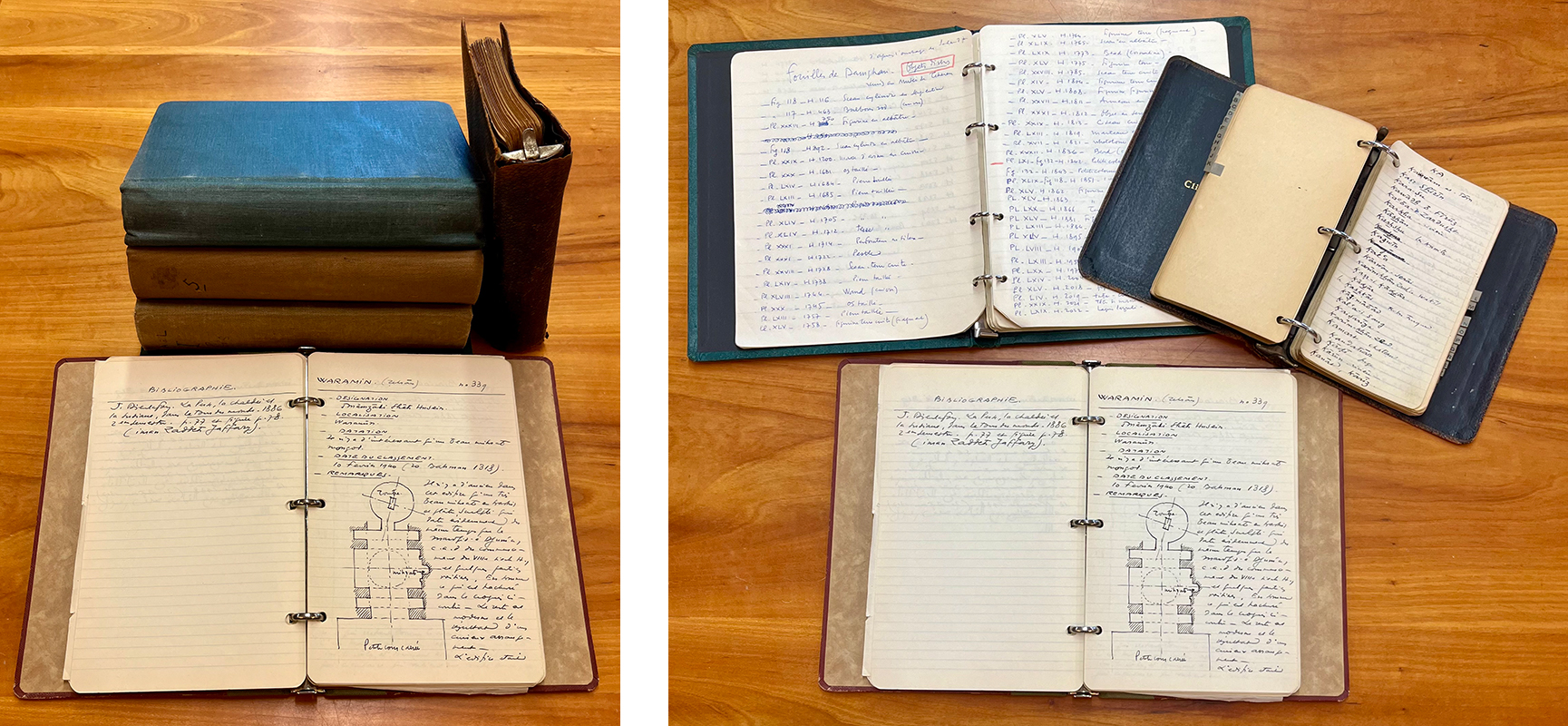
In 1995, the collection was transferred to the Fine Arts Library at Harvard University. In 2002, the audio content was transferred to the Archive of World Music at Loeb Music Library at Harvard University.
The collection is notable for its size and varied contents:
- 4,607 slides: color; 35 mm
- 2,272 negatives: film, 70 color; 12 x 9 cm or smaller
- 1,862 photographic prints: 67 color; 8 x 10 in. or smaller
- 62 transparencies: film, color; 6 x 6 cm and 16 mm
- 182 film reels: sound, b&w and color; 16 mm
- 149 sound tape reels and sound cassettes: analog
- 9 boxes of textual materials

Practical resources:
- Bibliographic record for the Ullens collection: https://id.lib.harvard.edu/alma/990053817020203941/catalog
- All digitized images: Harvard’s online catalog (Hollis) and Archnet
- 30 digitized photographs of Varamin: Hollis (note that the first photograph of the Emamzadeh Yahya below is not digitized)
- 28 films: Archnet
- Bibliographic record for The Marie-Thérèse, Baroness Ullens de Schooten collection at Harvard University: original ethnographic sound recordings, radio transmissions, film soundtracks, ca. 1951-1972: https://id.lib.harvard.edu/alma/990090942840203941/catalog
- Electronic finding aid for the sound recordings: http://nrs.harvard.edu/urn-3:FHCL.Loeb.Faids:mus00019
- Contact: Joanne Bloom, toplyn@fas.harvard.edu
Sources:
- Smith, Sharon C. “Marie-Thérèse Ullens de Schooten.” Authorities text, Archnet, https://www.archnet.org/authorities/1910.
- Ullens de Schooten, Marie-Thérèse, Baroness. In Perspective. Penzance: United Writers, 1989.
Citation: Joanne Bloom, “Baroness Marie-Thérèse Ullens de Schooten (1905–89).” Photographers entry in The Emamzadeh Yahya at Varamin: An Online Exhibition of an Iranian Shrine, directed and edited by Keelan Overton. 33 Arches Productions, January 15, 2025. Host: Khamseen: Islamic Art History Online.
